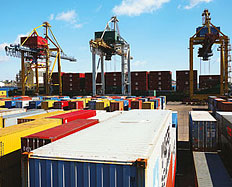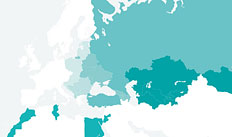Chapter 3
Pre-crisis evidence
The evidence from the pre-crisis period focuses on the effects of foreign bank presence in several areas: access to finance and the efficiency of local financial systems, financial stability in the face of local shocks, domestic business cycles and the transmission of international shocks across borders.
Foreign banks improved credit availability in emerging markets and made the delivery of credit more efficient, and foreign creditors often introduced superior lending technologies and marketing know-how. Large banks, from high-income countries in particular, tend to perform well in less developed countries. In emerging Europe especially, where commercial banks were rare at the start of the 1990s, there were substantial efficiency gains following foreign entry.10 Foreign banks also generated positive spillovers to domestic banks, for instance in terms of copying risk management methodologies, while competition tended to make bank lending cheaper. Some of these gains may initially have come at the cost of reduced lending to small and medium-sized enterprises (SMEs), as foreign banks will target the "best" customers and leave more difficult clients to domestic banks. However, recent studies find that foreign banks may increase SME lending in the medium term, using screening practices such as credit scoring. In line with this, the available empirical evidence for emerging Europe suggests that foreign bank entry has not led to a sharp reduction in small business lending.11
There is abundant evidence that foreign banks have a stabilising effect on aggregate lending during local episodes of financial turmoil. Unlike stand-alone domestic banks, foreign bank subsidiaries tend to have access to supportive parent institutions that provide liquidity and capital if and when needed. By the same token, however, access to foreign funding and lending opportunities means that foreign bank ownership can amplify domestic business cycles. When a single economy slows, multinational banks may withdraw funding and lend elsewhere, rather than cut margins in order to fund scarce domestic projects. When the wider economy is thriving, they may concentrate their attention on boom countries at the expense of slow-growing ones. As a result, foreign banks can exacerbate the "normal" business cycle (and make the job of monetary policymakers harder) despite their stabilising influence during local financial crises.12 This will be particularly true if foreign banks contribute to credit booms in foreign currency.
Foreign banks may also expose a country to foreign financial turmoil. Even before the 2008 Lehman Brothers collapse, it was amply clear that foreign banks can "import" financial crises and business cycle movements from abroad. Because parent banks reallocate capital across borders, they can withdraw it from a host country if hit by a crisis and in need of additional capital or liquidity. For example, the drop in Japanese stock prices starting in 1990, combined with binding capital requirements, led Japanese bank branches in the United States to reduce credit. The 1998 Russian crisis spilled over to Latin America as banks, including foreign-owned ones, saw their foreign funding dry up and had to cut back lending. At the same time, the extent of these destabilising effects appears to depend on the structure of international bank linkages. Foreign bank lending through local subsidiaries tends to be less volatile than direct cross-border lending.13
To summarise, the pre-crisis literature paints a nuanced picture. Foreign banks generally boosted financial development in host countries and provided a source of finance that remained relatively stable during local financial crises. At the same time they tended to magnify business cycles and could be a channel for importing foreign financial turmoil. However, studies that consider both the positive effects of foreign bank entry on credit constraints, financial development and long-term growth as well as the potential destabilising effects tend to find that the former outweigh the latter.14 In emerging Europe particularly, the presence of foreign banks seems to have contributed to long-term growth.15 Also, it is not even apparent that the pre-2008 destabilising effects of foreign banking outweighed its stabilising influence.16 Based on pre-2008-09 evidence, the overall impact of foreign bank entry on economic development seems to have been positive, despite some caveats.
10 See Fries and Taci (2005).
11 See De Haas et al. (2010) and Giannetti and Ongena (2012).
12 See De Haas and Van Lelyveld (2010) and Bruno and Hauswald (2012).
13 See Peek and Rosengren (1997), García Herrero and Martínez Pería (2007) and Schnabl (2012).
14 See Rancière et al. (2006), Levchenko et al. (2009) and Bruno and Hauswald (2012).
15 See Friedrich et al. (2012).
16 See Arena et al. (2007).







